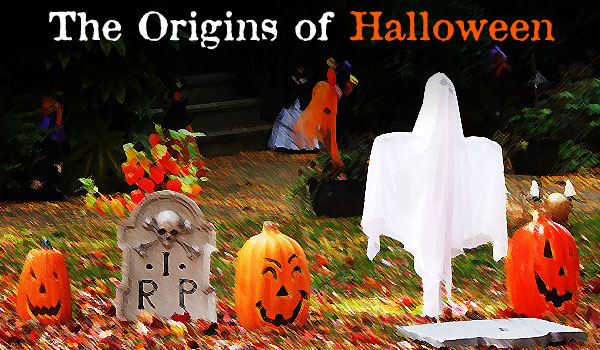The Origins of Halloween
Story by Gordon and Marcia Mercer. Photo by Jennifer C.
Cary, NC – If you want to understand the present, it’s good to know the past. Gordon and Marcia Mercer, CaryCitizen’s team on all things historical, tackle the origins of Halloween.
The Origins of Halloween
“From ghoulies and ghosties and long- leggety beasties and things that go bump in the night, Good Lord, deliver us.” – Old Scottish Saying
Halloween’s roots are generally believed to be the Celtic festival Samhain, although Halloween has other influences. Samhain is a word meaning end of summer and was the Celtic equivalent of New Year’s Eve.
The Celts believed those who had died within the past year rose that day and began their journey to the other world; flooding this world with spirits, ghosts of loved ones and other underworld creatures.
Samhain was celebrated with bonfires to honor the dead and to keep the dead from coming too close.
The Catholic Church attempted to Christianize the festival by redefining November 1st as the Christian Feast of All Saints. Later, November 2nd became All Souls’ Day, a day to pray for the souls of the dead. The word Halloween is a shortening of All Hallows Eve.
Pumpkin Carving & Jack O’Lanterns
Celtic traditions included hollowed out turnips carved into scary faces with burning wood coals or candles inside. These lanterns were thought to scare off evil spirits.
Settlers in America discovered the North American pumpkin to be softer and easier to carve, and began the American tradition of faces carved in pumpkins.
There is also a legend of an Irish man named Jack, a stingy and bad but clever sort, who outwitted the devil into promising not to take him to hell. Unfit for heaven as well, Jack’s spirit roams the earth with his lantern becoming, Jack O’ Lantern.
Trick or Treat
Costumes were worn to scare away bad spirits or to disguise a person from ghosts, who might want one last fling at mischief or revenge.
During the Middle Ages, Great Britain and Ireland had a tradition called “souling” in which children and poor people would go door to door begging for food and cakes in exchange for praying prayers for the dead on All Souls’ Day. This is thought to be one of the origins of our trick or treat tradition.
Scotland has a Halloween tradition called guising. Guising is similar to trick-or-treating except children must perform a song, tell a joke or other form of entertainment before receiving their treat.
Modern Halloween
Many of our contemporary traditions are rooted in ancient traditions. Our Halloweens have been a time of festivals in the park, fog drenched doorways lit with orange pumpkin light and laughter as costumed children line up for candy.
We are very grateful that, unlike the Celts, in our Halloween experiences we never had to worry about those ghosts and goblins being real!
————————————————————————————-
Gordon Mercer is past president and on the Board of Trustees of Pi Gamma Mu International Honor Society and professor emeritus at Western Carolina University. Marcia Gaines Mercer is a published author and columnist.




Great article Gordon. Enlightening